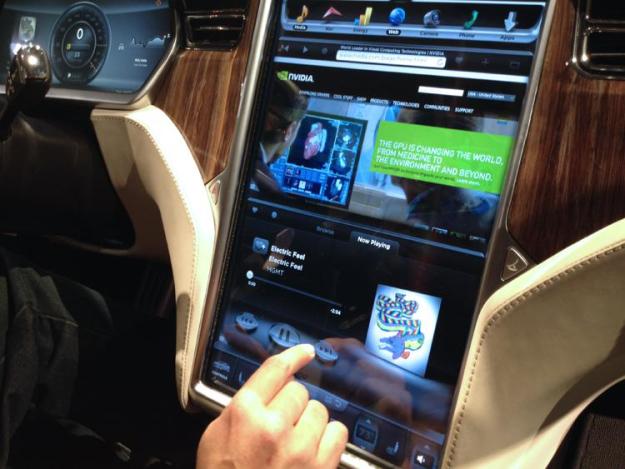
One of the most striking bits of automotive technology showcased at CES 2012 was the 17-inch Nvidia-backed screen in the new Tesla S Sedan. It reminded me more of a tablet than a car entertainment system, and Tesla has been the first to really get aggressive on things like apps for automobiles.
Personally, I remain annoyed that the services I use to enjoy media at home just won’t work in a car yet, and even more annoyed that I have to pay for both when I should only have to pay for media once. However, if we look ahead to self-driving cars and other advances foreshadowed by this year’s CES, I can imagine a future where a 42-inch screen is where the windshield is now, and you don’t really care how fast you get anyplace. I also wonder whether that is a good thing.
Let’s look at the future of automotive technology and driverless cars.
CES and the car that could kill you
One of the fun things about walking the automotive side of CES is counting the number of cars that could kill you. I don’t mean they will turn into robots and pound you into the pavement (though there have been a couple transformer cars that likely could have done that), I mean they have so many speakers and amps that were you to sit in the car and turn the amp up, you would get pulverized by the sound. Thank God no one has been sound blasted into hamburger yet, but I expect that day is coming.

Still, what is interesting about these cars, other than their deadly nature, is that they aren’t designed to be driven. They are designed to showcase a lot of technology, and as a result, all of the controls have been removed along with other useless parts like the engine and transmission. Outside a convention, they’re lifeless chunks of steel. But as we move toward self-driving cars powered by electricity, the need for big engines and manual controls will evaporate, so many of these ridiculous showcase projects might actually become visions of the future.
Danger, Will Robinson!
Will Robinson was the kid in the old Lost in Space show who was always being saved by the idiotic robot with (what appeared to be) a major motor-response problem. Half the time, the robot should have been perfectly capable of pounding the danger into pancakes. But that little trip down memory lane aside, the problem I see looming is that as we move to more self-driving cars and entertainment systems that isolate you from the world, the more we’ll miss of the world and the less fun we’ll have actually driving.
A few years back, a couple of engineers drew up their idea of the perfect car: It looked like a living room with a couple of wheels underneath. I agree that may become the future, and maybe it will be safer and more comfortable, but it really doesn’t sound like much fun.
On top of that, Google hasn’t been that focused on security, and McAfee has both pointed out its shortcomings on Android and suggested that the auto industry isn’t at all ready to be as connected as it will soon need to be. A hostile attacker compromising a fleet of cars could create a rather impressive amount of damage. Think of a line of cars suddenly turning right and accelerating off the side of a bridge. While it would, at least for a short time, make the movie you were watching more exciting, it would also likely assure you’d never see the end of it.
Granted it could be worse, as this scene from iRobot demonstrates. A lot worse. (Though after seeing that, I still want that Audi.)
Blending automation with human control
I think a better future was the one showcased by the Mercedes Benz DICE project, which put a Minority Report-like windshield experience in the car. With this technology, what you were watching showed up in a heads-up display, and you could better choose between the car driving or doing the work yourself.

Like cruise control, I think self-driving will be best on long drives and heavy traffic, but for short hops and mixed traffic, you’ll likely be better off driving yourself. In addition, the idea of a big screen with stuff going on below the windshield almost assures you’ll be looking down when you shouldn’t be, requiring stronger accident-avoidance technology than if you just put the same information in a heads-up display on the windshield. Finally, I just don’t trust robots that much, and I think I’ll always want the option of taking back control of the car.
I expect some of us will experience this future in about 10 years. Let’s hope it is a brighter than a self-driving living room.
Guest contributor Rob Enderle is the founder and principal analyst for the Enderle Group, and one of the most frequently quoted tech pundits in the world. Opinion pieces denote the opinions of the author, and do not necessarily represent the views of Digital Trends.


